Chaos from Nothingness
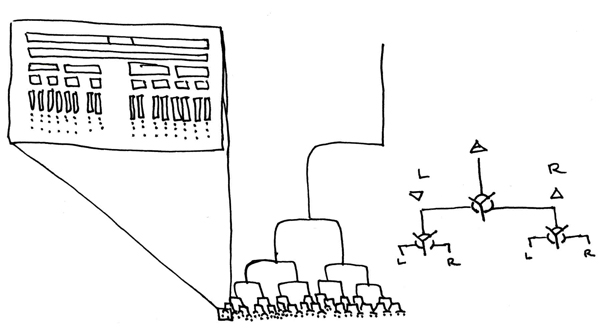
From the simple enough binary pattern established by the Feigenbaum splitting method, we can extrapolate an infinite series of halves. This generates a computer programming language similar to the Chinese I Ching (left) as well as a basic circuitry system based on this progression series similar to the three mother letters of QBLH (right).
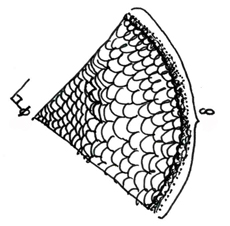
Here we depict the Feigenbaum doubling method along the (more familiar) x-axis, but we limit the angle of expansion through the y-axis along the z-axis to a ninety degree slice. We label the origin point of the slice as the null or empty set, and the great arc of the forty-five degree angle we label infinity. We can still, even in this model, observe the three distinctive layers, of "bits," of the standard Feigenbaum set.
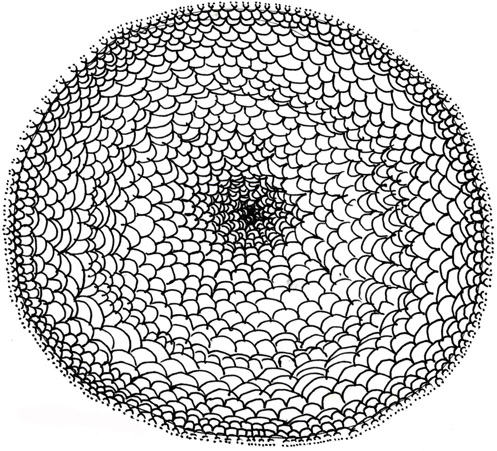
When we increase the limit of the angle from forty five degrees to three-hundred sixty, we form the image above, which is essentially the shadow of a Bucky-ball, as well as the Radiolarin named for him. It is also a relatively decent depiction of a spherical Menger sponge, which has infinite volume and zero mass. Here again, we are still able to see the three distinct Feigenbaum "bits." Remember, the same terms apply here as above, the origin of the circle is null or zero, and the circumference of the circle branches off into infinity.
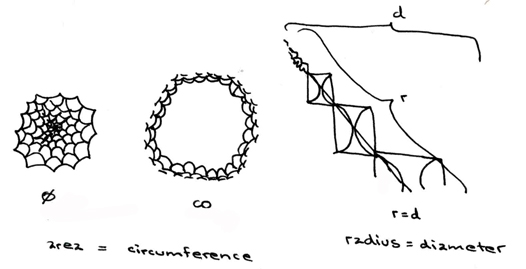
There are basically three ways of measuring the Feigenbaum statistical "bits" of information. The first is by looking at the central ring of the first set or "bit" of binary splitting branches. The second measure we extrapolate is the circumference. The third is the radius, however since we are measuring between zero and infinity, we have to substitute the DeSitter metric measure for the event horizon between the binary branching patterns as their wavelngths arc across the radius measure.
----------------------------------------------------------------------------------------------------------------shadow time
Consider what Peter Carroll, in Liber Chaos on page 29, calls "pseudo" time and Shadow Time. "Pseudo" time, here, is the perpetual present-tense, where there is no future and no past in physical, material reality. Shadow Time, then, is the "etheric" probabilistic projection, orthogonal to pseudo-time, of the concepts of futrue and past. The interaction of "pseudo" time and Shadow Time is such that, in each present-tense event, which is reckoned as one Planck time in length, there is a collapsing Schroedinger wave-function from probability zero (impossibility) to probability one (certainty). The operant observer principle is not mentioned.
"Pseudo" time interjects itself as upon a numberline which can be reckoned as the expanding lightcone of entropy, or the standard, forward-flowing arrow of time. Shadow Time and "pseudo" time must be divided by something akin to a strange attractor, in order for the collapsed waveform of probability (img559) to alternate, or spiral, around the Shadow Temporal axis.
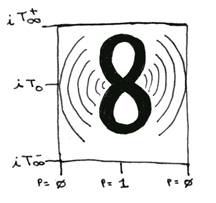
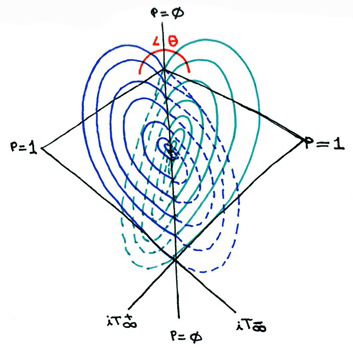
By replacing the simple wave function collapse along the present-tense slice, or Poincare section, with a strange attractor (img551), then we can see that the system acquires an increasing degree of freedom (Chaos), and in this way creates the opportunity for probabilities to assemble in random harmonic patterns from one present to the next.
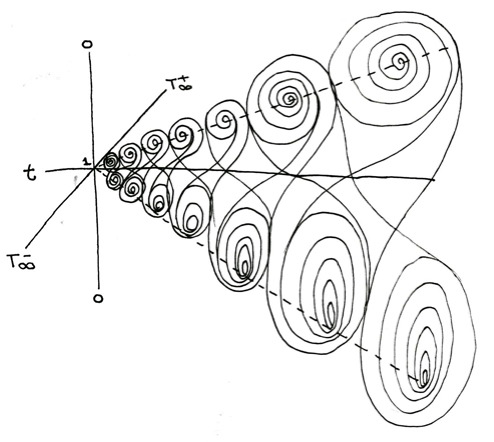
The results of this kind of model, wherein inversion is included, mainly deal with the constituent components of matter-energy quantum pair-bonds from one Planck time to the next. For example, the direct relationship between probability one certainty and probability zero uncertainty.
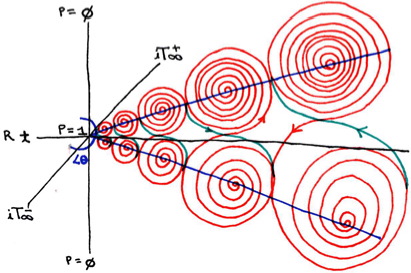
However, as Wilson points out (Quantum Psychology, 159), "since quantum 'laws' do not have the absolute nature of Newtonian (or Aristotelian) laws, all quantum theory must use probabilities." He continues, "the Aristotelian 'yes' or 0% and 'no' or 100% represent the certitude Occidentals have traditionally sought. Quantum experiments refuse to yield such certitude, and we find ourselves always with some probability between 0% and 100%." Hence this model theoretically represents a centurial gradient of probabilistic outcomes rather than plain binary.
Since the present-tense ("psuedo" time) strange attractors can connect to the immediately past or immediately future strange attractors (Shadow Time) it also represents the combination of six strange attractors (plus and minus for each present, negative and positive for past and for future) that, when graphed in three dimensions over time, as coordinate triplicites plus spin, can be decomposed to form a 4-Matrix measuring the four possible probability states: "yes," "no," "yes AND no," and "NEITHER yes NOR no."
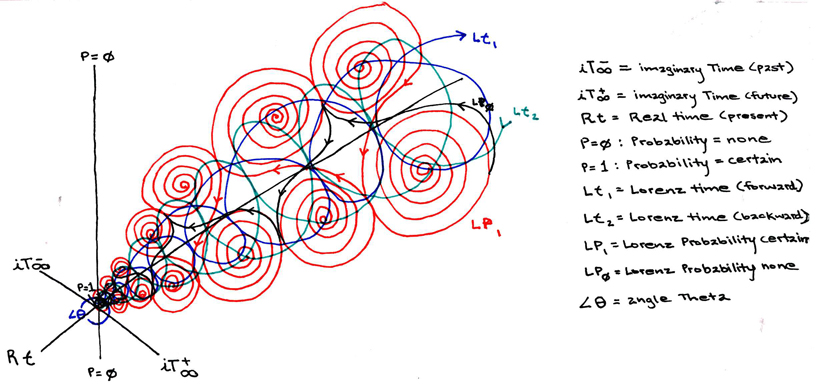
Discuss this section on the forums
----------------------------------------------------------------------------------------------------------------Modeling zero-point with gyroscopic motion in a fluid dynamic medium

Here we see the product sum over histories for the fluid dynamic medium perturbated by the motion of the three-arced gyroscope. This model fits the motions of the scalar polar model on the left (above), where the greater vertical arc remains static and the other great arcs move in opposite directions relative to one another. I have taken the liberty of labeling these spirals by the short-hand notations for PI (the arithmetic spiral) and PHI (the exponential spiral).
----------------------------------------------------------------------------------------------------------------this information is all © 2004 - Jonathan Barlow Gee
LINKS: